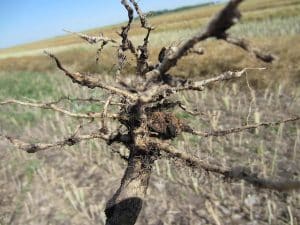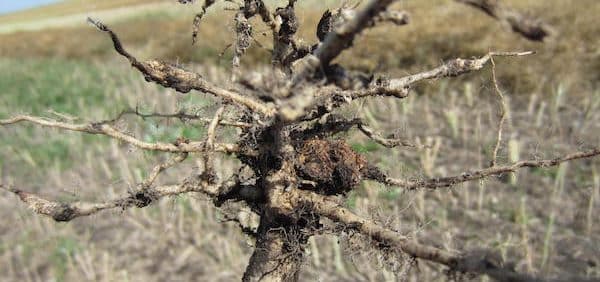Manitoba has a few confirmed cases of clubroot in 2015. One field with galls was found in the R.M. of Pembina, and fields with galls were found in the Swan River Valley.
Manitoba’s Pest Surveillance Initiative Lab also confirmed the presence of clubroot DNA in soils in many areas of the province, and testing is ongoing. While clubroot DNA in many of these fields is not currently at levels high enough to cause a significant outbreak of symptoms, lab results do indicate that many areas of the province have potential for clubroot to develop.

Use of clubroot resistant varieties is recommended in areas where clubroot symptoms have been reported. All growers who feel they are at elevated risk of bringing in clubroot or having the pathogen produce full-blown symptoms are also advised to use R varieties. Growers in a higher-risk community — however they may define that community — may want to use R varieties to keep levels low.
When using R varieties in known clubroot areas, keep in mind that the pathogen will adapt to the R trait, as has been observed in the Edmonton area. Crop rotation, equipment sanitation and controlling host weeds work together to extend the effective life of the R trait. Applying these practices under lower levels of clubroot will also reduce pressure on the resistance trait.
Saskatchewan: Clubroot symptoms were not observed on any fields in Saskatchewan in 2015, but with clubroot in the Swan River Valley of Manitoba and in Alberta counties bordering Saskatchewan, growers in Saskatchewan will want to keep an eye out in 2016. Saskatchewan’s clubroot management plan.
Further reading:
Consider tillage wisely
Clubroot resistance breakdown confirmed over a wide area in Alberta

